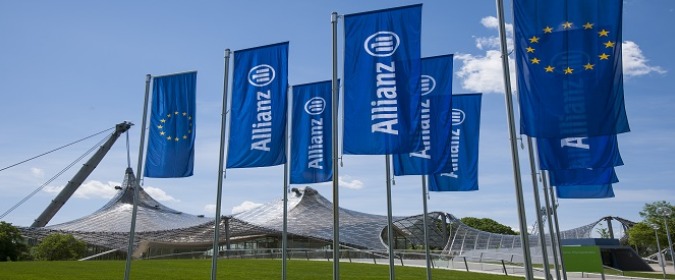Finance
Global Solutions: Striving for an Agricultural Utopia

How AllianzGI is providing retirement solutions for those looking for agricultural solutions.
In the last 100 years, the world’s population has quadrupled, resulting in five billion more people for the planet to feed. Over the past century, much has been achieved to meet global food needs through land reforms, development of new planting methods, machinery and — especially since World War II — husbandry of drought and disease resistant crops.
But the world is in constant change: global population is expected to surpass eight billion people by 2025 (U.S. Census Bureau), and so the challenge to leverage our finite agricultural resources continues. It is no surprise that the search for an agricultural utopia holds the attention not only of those likely to suffer from hunger, but also of those wanting to make the world a better place.
More than twenty specialized agricultural research Centers operate around the world — in places as remote as Cotonou in Benin or Bogor in Indonesia — staffed with scientists and researchers whose mission is to increase agricultural yields, whether livestock, fish, or plants. Moreover, they conduct this essential work in the face of extremely challenging conditions such as war, disease, drought or floods.
Researchers Xiaobo Zhang and Mateusz Filipski visiting a mill in Ethiopia.
Photocredit: ©IFPRI
Photocredit: George Mahuku/CIMMYT
The Association of International Agricultural Research Centers (AIARC) supports the Centers’ mission of eliminating world hunger by providing administrative services to the Centers. Says AIARC President and CEO, Jeffrey Hungate, “we pool and leverage these Centers’ resources to negotiate for products and services that a Center would not able to get on its own.”
For example, Hungate seeks to provide a suitable retirement for 2500 highly skilled scientists from more than 80 nations working tirelessly to eradicate the scourge of malnutrition and starvation. These scientists frequently work on contracts from three to five years, moving around the world to different Centers or other organizations as needed to further their work.
Retirement? Could become difficult for a global nomad
Demographic changes have made many pension systems in both developed and emerging countries struggle to provide retirement income for growing numbers of pensioners. Still, these researchers face a more personal challenge: How do you save for retirement utopia when you live as a global “nomad”? How can you save when you are not located within one national retirement system or, indeed, when you live in countries that have no retirement systems at all?
AIARC provides a pragmatic solution that meets the diverse needs of members throughout the world. In 1992, AIARC’s Board of Directors established the IARC Retirement Plan Trustee to provide a retirement savings vehicle for the employees of the various Centers. In 2013, AIARC partnered with AllianzGI to allow plan members to choose their own investments that fit their personal circumstances. The research Centers contribute 15 percent of an employee’s salary, while employees may contribute up to 100 percent of their salary. Approximately 350 Million US dollar is currently held with the trustee.
“Our plan members are highly educated scientists. They are all passionate about their profession. Unfortunately, many devote all of their time to research and put off thinking about retirement until it is too late. We had a need for professional fund management, where members didn’t have to worry about diversifying or reallocating their funds on their own. They are just too busy saving the world,” says Hungate. “With the introduction of the AllianzGI LifeCycle Concept, we found a convenient way to help our plan members harness risk while they still have the time to do so and to automatically adjust their risk return profile appropriately as they age. If a member’s personal circumstance changes and he or she intends to work longer — or retire earlier — the concept adapts to that goal at the click of a button in the web-based retirement tool.”
But how do you communicate the benefits of such a plan? Usually, a campaign involving a mix of town hall meetings, e-mails or brochures would serve to capture attention in a company. AIARC doesn’t have the luxury of an audience so easily reached. Its members are scattered in remote duty posts ranging from Nigeria to the Philippines.
18 agricultural stakeholders from Senegal traveled to Colombia for a weeklong south-south learning exchange.
“The biggest challenge is the geographical dispersion; unlike a company located on one site, you simply cannot put a poster in the canteen or organize an impromptu information session,” says Hungate. “With the online administration and information tools provided by AllianzGI, employees have access to their retirement saving plan whenever they want. We also use webinars to help plan members easily navigate all relevant information.”
But, as is true with the work of the agricultural researchers, achieving retirement utopia is a constant effort, concedes Hungate. “We still struggle with how to deal with the inherent risk aversion of many plan members. It is difficult to convince members that money market funds no longer generate sufficient income to compensate for inflation as was the case in previous economic environments.”
In partnership with AllianzGI, AIARC has embarked on a route for “smart income”. Hungate explains that the term frames the challenge as not about being an accumulation exercise but about providing regular income for retired plan members.
Could the AIARC model be a blueprint for other international organizations? “In principle yes, since it contains many ingredients that cater to employer and employee needs,” Andreas Hilka, Head of European Pensions at AllianzGI, says. “But such corporations often face additional obstacles and hurdles such as the different Social Security or tax legislation in various countries.”
Although efforts at harmonization are helping, such as the IORP [Institutions for Occupational Retirement Provision] directive in Europe, Hilka says “Schemes with universal reach have to still be seen as utopian rather than as a standard model.”























































